来自:查字典高考网 2014-12-25
PMEL
ORNL/CDIAC-115
Comparison of the Carbon System Parameters at the Global CO2 Survey Crossover
Locations in the North and South Pacific Ocean, 1990-1996
As a collaborative program to measure global ocean carbon inventories and provide estimates of the anthropogenic carbon dioxide (CO2) uptake by the oceans, the National Oceanic and Atmospheric Administration and the U.S. Department of Energy have sponsored the collection of ocean carbon measurements as part of the World Ocean Circulation Experiment and Ocean-Atmosphere Carbon Exchange Study cruises. The cruises discussed here occurred in the North and South Pacific from 1990 through 1996. The carbon parameters from these 30 crossover locations have been compared to ensure that a consistent global data set emerges from the survey cruises. The results indicate that for dissolved inorganic carbon,fugacity of CO2, and pH, the agreements at most crossover locations are well within the design specifications for the global CO2 survey; whereas, in the case of total alkalinity, the agreement between crossover locations is not as close.
1. INTRODUCTION
Human activity is rapidly changing the trace gas composition of the earths atmosphere, apparently causing greenhouse warming from excess carbon dioxide (CO2) along with other trace gas species, such as water vapor, chlorofluorocarbons (CFCs), methane, and nitrous oxide. These gases play a critical role in controlling the earths climate because they increase the infrared opacity of the atmosphere, causing the planetary surface to warm. Of all the anthropogenic CO2 that has ever been produced, only about half remains in the atmosphere; it is the missing CO2 for which the global ocean is considered to be the dominant sink for the man-made increase. Future decisions on regulating emissions of greenhouse gases should be based on more accurate models that have been adequately tested against a well-designed system of measurements. Predicting global climate change, as a consequence of CO2 emissions, requires coupled atmosphere/ocean/terrestrial biosphere models that realistically simulate the rate of growth of CO2 in the atmosphere, as well as its removal, redistribution, and storage in the oceans and terrestrial biosphere. The construction of a believable present-day carbon budget is essential for the skillful prediction of atmospheric CO2 and temperature from given emission scenarios.
The worlds oceans, widely recognized to be the major long-term control on the rate of CO2 increases in the atmosphere, are believed to be absorbing about 2.0 GtC yr-1 (nearly 30 to 40% of the annual release from fossil fuels). Our present
understanding of oceanic sources and sinks for CO2 is derived from a combination of field data, that are limited by sparse temporal and spatial coverage, and model results that are validated by comparisons with oceanic bomb 14C profiles. CO2 measurements taken on the World Ocean Circulation Experiment (WOCE) cruises, which began in 1990, have provided an accurate benchmark of the ocean inventory of CO2 and other properties. These measurements were cosponsored by the National Oceanic and Atmospheric Administration (NOAA) and the U.S. Department of Energy (DOE) via the U.S. Joint Global Ocean Flux Study (JGOFS) Program. Investigators supported by these funding agencies have collaborated to examine data collected during the WOCE and Ocean-Atmosphere Carbon Exchange Study (OACES) cruises. This report addresses the consistency of oceanic carbon dioxide system parameters during 1990-1996 in the North and South Pacific.
The four parameters of the oceanic carbon dioxide system are dissolved inorganic carbon (DIC), fugacity of CO2 (fCO2), total alkalinity (TAlk), and pH. This report compares the carbon system parameters, along with salinity and dissolved oxygen (O2), against sigma theta () where cruises overlapped throughout the Pacific Ocean basin. Similar comparisons have been made for oceanic carbon in the Indian Ocean (Johnson et al. 1998; Millero et al. 1998). In addition, comparisons of nutrient data have been compiled (Gordon et al. 1998). The cruise data for this report will be made available through the OACES and the Carbon Dioxide Information Analysis Center (CDIAC) data management centers.
The Pacific Ocean cruises occurred from 1990-1996, and data have been compared at 30 locations where cruises overlapped in the North and South Pacific Ocean (Fig. 1). We do not address survey stations in the Pacific where no crossovers occurred. In addition, carbon and hydrographic data collected during some of the Pacific expedition cruises (i.e., P2, P12, and S4I) were not available in time for this report.
2. ANALYTICAL METHODS
Analyses of all carbon parameters were performed following the techniques outlined in the Handbook of Methods for the Analysis of the Various Parameters of the Carbon Dioxide System in Sea Water (DOE 1994). Certified Reference Materials (CRMs) were used on all cruises as secondary standards for DIC, unless otherwise noted. Discussion of the preparation and use of CRMs is available in detail (UNESCO 1991; Dickson 1992; Dickson, Anderson, and Afghan, unpublished manuscript; Dickson, Afghan, and Anderson, unpublished manuscript). These materials consisted of a matrix of natural, sterile seawater. They were bottled in large batches into 500-mL borosilicate glass containers, sealed to prevent contamination, and shipped to the institutes participating in this study. These secondary standards were then analyzed at sea over the course of each of the cruises as a means to verify accuracy. Certification of the reference material
for DIC is based on manometric analyses in the shore-based laboratory of Charles D. Keeling of Scripps Institution of Oceanography (SIO) over a period of several months (UNESCO 1991; Guenther 1994; Keeling, C. D., personal communication, 1999). Since CRMs were analyzed routinely for DIC during most cruises used in this report, all groups analyzing for TAlk on those cruises subsequently analyzed CRMs as well; this enabled post-cruise corrections to be
made to the TAlk data based on archived samples that were analyzed at Dr. Keelings laboratory at SIO. CRMs were not available for any other carbon parameter discussed in this report. Analyses of salinity and O2 followed WOCE Hydrographic Program (WHP) protocol (WOCE 1994).
3. RESULTS AND DISCUSSION
3.1 Statistical Methods
Tables 1 and 2 summarize the crossover sites and parameters measured, and Tables 3, 4, 5, and 6 are summaries of the statistical data for each parameter at the crossover locations. Eleven laboratories from two countries participated in this comparison study that examines crossovers in both the North and South Pacific. At some of the crossover locations, the site was occupied on more than one occasion [i.e., the crossover at 170?W and 10?S was frequented by NOAA on three different cruises (CGC90, EqS92, and P15S), as well as by the Institute of Ocean
Science (IOS) (P15N) and the University of Hawaii (UH) (P31)]. A total of 30 crossover locations were studied in this analysis and 41 individual crossover comparisons were made. Individual plots of each carbon parameter, along with salinity and O2, were first created for every crossover against using data from the entire water column (Appendix A). Only data sets that showed good agreement in both salinity and O2 data were used for the comparisons. An expanded area within the plot was examined further based on the region of reasonable agreement of the vs salinity plot. In most cases, 27.0 was used in the expanded regions.
A curve-fitting routine was applied to the expanded plots (Appendix A) using a second-order polynomial fit (unless otherwise noted in Tables 3, 4, 5, and 6). The difference between each region of crossover was calculated based on evenly distributed intervals on the axis; the intervals chosen were, on average, 0.04 units apart. In the case where more than one station on a given cruise was computed at a particular crossover location, averages of the resulting fits of the two or more stations for that cruise were determined, and the total mean of the differences over the entire range was compared. This procedure was performed for every carbon parameter measured (Tables 3, 4, 5, and 6). The mean and standard deviation of the differences were computed, along with the mean and standard deviation of the absolute value of the differences. For the DIC data, the results were calculated both uncorrected and corrected using the CRMs as a basis for the corrections.
3.2 Cruise Results
The most detailed carbon parameter results are for DIC, as this parameter was measured on all of the cruises (Table 3). The next most frequently measured parameter was fCO2, followed by TAlk and pH (Tables 4, 5, and 6), respectively.
DIC CRMs were available to the investigators for almost every cruise during the survey. In general, there is excellent agreement between DIC data sets at the crossover locations. At the beginning of the program, the goal was to obtain
agreements between cruises that were less than 4.0 mol/kg. On 31 of 41 crossover comparisons the uncorrected DIC differences were less than this value, and on 24 of the comparisons the differences were less than 2.0 mol/kg.
Most of the cruises that did not meet this criteria occurred at the beginning of the program when methods were still being developed, and one comparison was during a strong El Nio event where the upper water column hydrography was
significantly different from normal (Feely et al. 1995). When the DIC data were corrected for CRMs, 36 of the 41 comparisons were less than 4.0 mol/kg, and 31 comparisons were less than 2.0 mol/kg. The mean of the absolute value of the differences was 2.4 2.8 mol/kg for the uncorrected data and 1.9 2.3 mol/kg
for the corrected data (Fig. 2). For a mean DIC concentration of approximately 2260 mol/kg in the deep Pacific, this difference is equivalent to an uncertainty of approximately 0.08%. The excellent agreement of the DIC data was
likely due primarily to the use of the coulometer (UIC, Inc.) coupled with a SOMMA (Single Operator Multiparameter Metabolic Analyzer) inlet system developed by Ken Johnson (Johnson et al. 1985, 1987, 1993; Johnson 1992) of Brookhaven National Laboratory (BNL), as well as the use of CRMs as secondary standards during the cruises. The spirit of cooperation and close interactions among the scientists and technicians who were responsible for the measurements also
contributed to the outstanding quality of the data set.
The crossover comparison of fCO2 in seawater is not as straightforward as the comparison of the other carbon parameters because the measurement temperature for fCO2 differs for different cruises. The comparison thus requires a temperature normalization, which is performed by using the carbonate dissociation constants, and measured DIC. For comparison purposes, all values were normalized to 20癈 in this report. The normalization is dependent on the dissociation constant used. In this comparison, we used the constants of Mehrbach et al. (1973) as refitted by Dickson and Millero (1987). An example of the effect of constants on the final comparison is given in Table 7 in which we use typical deep-sea DIC and fCO2 values as found in the southeastern Pacific. Also included in the table are the fCO2@20癈/DIC values in atm/(mol/kg to illustrate the sensitivity of discrete fCO2 measurements relative to DIC in deep waters.
We analyzed 16 crossover comparisons for fCO2, and observed differences ranging between -28.7 and 34 atm, excluding the large difference during the 1992 El Nio at 5?N, 110?W. The mean of the absolute value of the difference was 17.6 16.3 atm. In deep water 10 atm of fCO2 measured at 20癈 is approximately equivalent to an uncertainty of 1.5 mol/kg DIC. Thus, with the possible exception of two or three crossover locations, the systematic differences in the fCO2 data corresponded to a similar uncertainty to that of the majority of the DIC results. Since there were no CRMs available for fCO2 during the Pacific expeditions, the analysts used their own compressed gas standards for the measurements. Some of the differences between the data sets may have resulted from systematic differences etween standards and/or differences between methods employed.
The agreement of the TAlk data between the 15 crossover locations is not quite as good as the DIC results. The differences between cruises ranged from -11.5 to 7.8 mol/kg; generally, the smallest differences correspond to the excellent agreement by the same laboratory on different cruises. As with DIC and fCO2, the largest offsets generally occur during the strong El Nino event in 1992. The mean of the absolute value of the difference was 5.7 3.3 mol/kg; this corresponds to a mean uncertainty of approximately 0.2%. CRMs were available for TAlk where crossover comparisons were made for this report, and all data have been normalized to the certified values. Three laboratories performed pH analyses, and as a result, only five crossover locations were available to compare the pH results. All comparisons were made on the total seawater scale. The differences ranged from -0.0005 to 0.0062 and the mean of the absolute value of the difference was 0.0023 0.0025. In the deep Pacific, an uncertainty of 1 mol/kg DIC is equivalent to approximately 0.003 pH units. These results suggest that the limited amount of pH data in the Pacific were in excellent agreement with each other.
The summary data in Tables 3, 4, 5, and 6 should be viewed as one of several indicators of the overall quality of the carbon data from the Pacific. In addition to these results, there also are the shore-based analyses of replicate DIC samples taken during each of the cruises (Guenther et al. 1994) and the interlaboratory analyses of the CRMs (Dickson 1992). These three pieces of information should be used together with thermodynamic models in the process of evaluating the overall quality of the database. In several cases, particularly with respect to the NOAA data sets, three or four carbon parameters were measured during the cruises. In these situations, the internal consistency of the individual parameters in the data sets can be checked using an appropriate thermodynamic model (Millero et al. 1993; Byrne et al., in press; Wanninkhof et al., 1999). In this way, two parameters may be used to check the validity of the third and, in some cases, fourth parameter. For example, very precise and accurate DIC and pH data may be used to validate the fCO2 and TAlk data. We recommend that individual data sets be evaluated in this manner before they are used in physical and biogeochemical models. In addition, it is our recommendation that DIC data are reported to the database manager as both uncorrected and corrected with respect to CRMs, and that the CRM results are appended in a meta file. This file should contain at minimum CRM batch number, number of CRMs run, the given value and observed values, along with the standard deviation and number of CRM results rejected. The method of correction of the data should be clearly described, including if the correction was applied per cell, per cruise, using a longer-term mean, or if the correction was an additive or a ratio. In order to obtain a coherent data set of DIC from this program, it is imperative that the data be corrected in the same way. As shown in this report, the crossover data for DIC are statistically improved when the correction is applied. We also recommend the TAlk data be reported to the database manager in a similar way, appending a meta file containing a description of the CRM results. In addition, it is useful for both CRM corrected and uncorrected TAlk data to be submitted.
4. CONCLUSIONS
The comparison of the carbon system parameters during the WOCE and OACES cruises in the North and South Pacific has provided unique information on data quality at the crossover locations. For DIC, fCO2, and pH, the agreement at most crossover locations is well within the design specifications for the global CO2 survey, despite the lack of CRMs for both fCO2 and pH. In a statistical analysis performed on DIC data that were corrected to CRM values vs noncorrected values, results indicate there is a significant difference between the two. On the other hand, although normalized to CRM values for TAlk, the comparisons made in this report for that parameter were not as good. The outcome of this comparison stresses the importance of CRMs, as well as the value of building some redundant measurements into the program to provide an independent check on data quality.
Since the inception of this document, we have made every attempt to include the most up-to-date information available; however, large data sets are constantly evolving. Some of the data presented in this report are expected to change as the data are further evaluated. To access the latest data sets, please check the web sites listed in Section 5.
【新托福阅读复习材料:美国科学文摘精选(三)】相关文章:
[标签:海外留学,语言考试,托福,,]
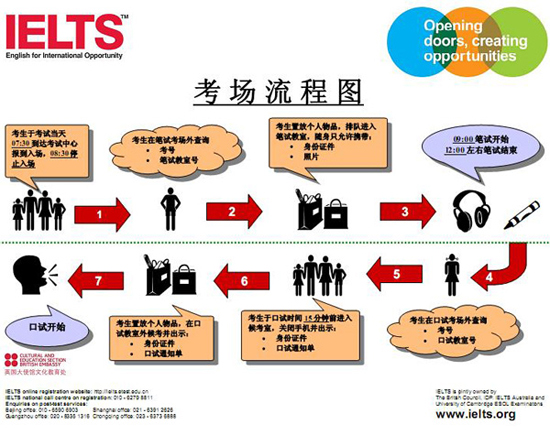 雅思考试考场流程图
雅思考试考场流程图 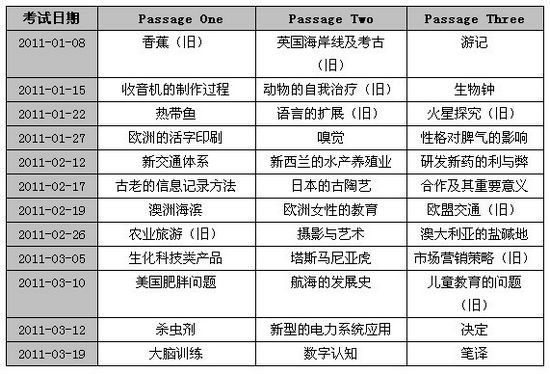 2011第一季度雅思阅读回顾与解析
2011第一季度雅思阅读回顾与解析 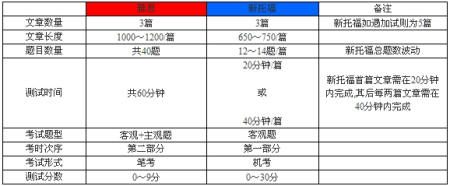 雅思vs托福 阅读异同大盘点对照表
雅思vs托福 阅读异同大盘点对照表 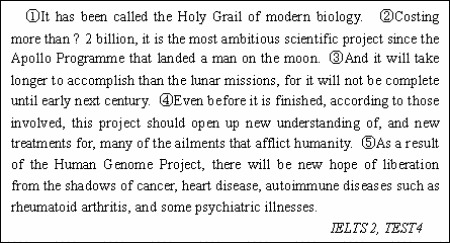 中学生雅思阅读快速提高的秘密
中学生雅思阅读快速提高的秘密 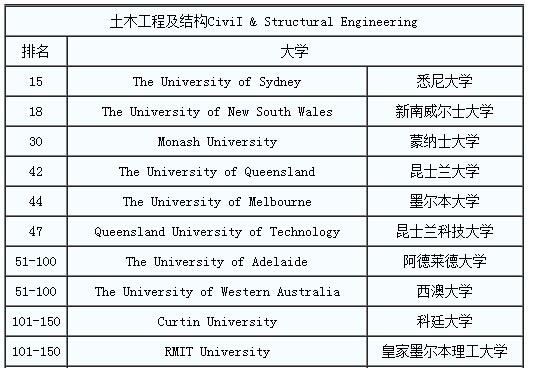 澳洲留学热门专业:土木工程专业排名
澳洲留学热门专业:土木工程专业排名  雅思听力周周练第四期-参赛篇
雅思听力周周练第四期-参赛篇 新疆:关于做好2019年普通高校招生美术类、音乐类专业统一考试工作的通知
福建:关于做好2019年普通高校招生艺术类专业省级统一考试工作的通知
陕西:关于做好2019年陕西省普通高等学校艺术类专业考试招生工作的通知
广西:2019年普通高校招生艺术类专业全区统一考试合格分数线问答
江苏:2019年普通高校招生艺术类专业省统考信息确认注意事项
甘肃:关于做好2019年普通高等学校招生艺术类专业统一考试工作的通知
广东:关于2019年普通高等学校招生艺术类和体育类术科统一考试有关事项的通知
北京:2019年普通高等学校艺术类专业招生工作实施办法(摘要)
安徽:2019年普通高校招生艺术专业统一考试模块一考试说明(试行)
甘肃:美术类专业统考科目怎么评?美术类统考评卷的具体流程揭晓
湖南:关于做好2019年普通高等学校招生艺术类专业全省统一考试工作的通知
贵州:关于做好2019年普通高等学校艺术,体育类专业考试招生工作的通知
爆笑班主任 第一季 第221集 高考结束学生有多疯狂?山东王老师疯狂吐槽
学渣儿子高考,英语选择题全选B!老师通报成绩的那一刻父亲懵了